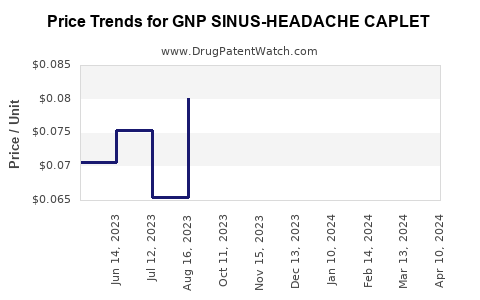Drug Price Trends for GNP SINUS-HEADACHE CAPLET
✉ Email this page to a colleague

Average Pharmacy Cost for GNP SINUS-HEADACHE CAPLET
| Drug Name | NDC | Price/Unit ($) | Unit | Date |
|---|---|---|---|---|
| GNP SINUS-HEADACHE CAPLET | 46122-0658-62 | 0.08375 | EACH | 2024-11-20 |
| GNP SINUS-HEADACHE CAPLET | 46122-0658-62 | 0.08006 | EACH | 2024-10-23 |
| GNP SINUS-HEADACHE CAPLET | 46122-0658-62 | 0.08286 | EACH | 2024-09-18 |
| GNP SINUS-HEADACHE CAPLET | 46122-0658-62 | 0.08040 | EACH | 2024-08-21 |
| GNP SINUS-HEADACHE CAPLET | 46122-0658-62 | 0.07500 | EACH | 2024-07-17 |
| GNP SINUS-HEADACHE CAPLET | 46122-0658-62 | 0.08138 | EACH | 2024-06-19 |
| >Drug Name | >NDC | >Price/Unit ($) | >Unit | >Date |


